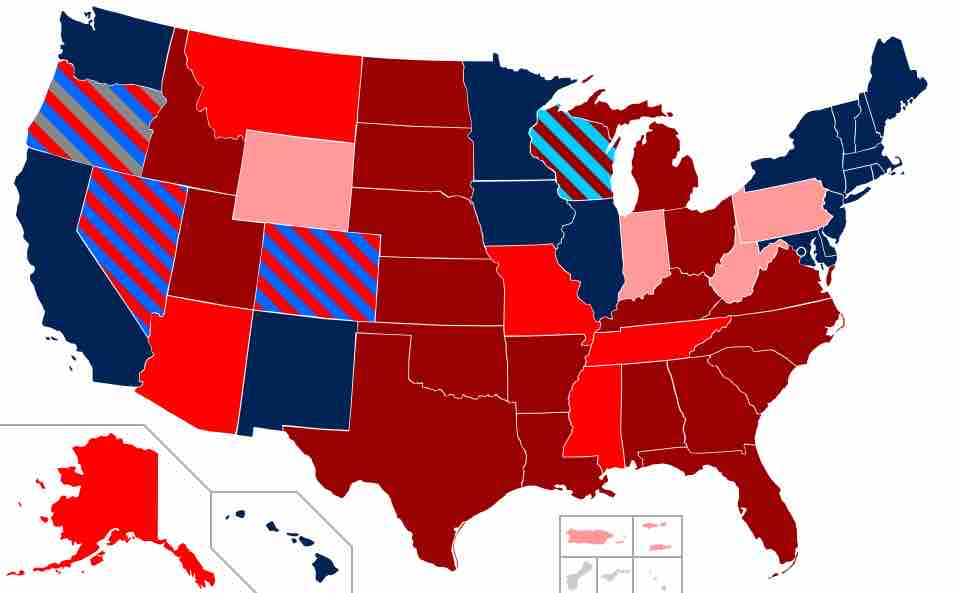Homophobia is a range of negative attitudes and feelings towards homosexuality or people perceived as homosexual . Homophobia is observable in critical and hostile behavior like discrimination and violence. Much like racism or sexism, homophobia involves the targeting of a specific population of individuals with certain traits. Homophobia, or the fear of lesbian, gay, bisexual, transgender, and queer (LGBTQ) individuals, is often the impetus for discrimination, which can be expressed through either institutional or informal means. Institutional discrimination involves the state apparatus. If homophobic discrimination is institutional, it means either that non-heterosexual sex acts are criminalized or that LGBTQ individuals are denied the same legal rights as heterosexuals. Informal discrimination is not necessarily sanctioned by the state, but involves social pressures against LGBTQ individuals, behaviors, and identities.

Homophobic Protests in the United States
Frequently, homophobia is prompted by religious beliefs.
In the United States, the social disapproval of homosexuality is not evenly distributed throughout society. That being said, it is more or less pronounced according to age, ethnicity, geographic location, race, sex, social class, education, political identification, and religious status. Republicans are far more likely than Democrats to have negative attitudes about people who are LGBTQ. Likewise, people who consider themselves to be religious are more likely than secular individuals to hold negative views about LGBTQ people.
Historical Institutional Homophobia: Holocaust
On many occasions in Western nations in the twentieth century, LGBTQ individuals have been stigmatized because of homophobia. One notorious example of homophobia and extreme discrimination was the persecution of LGBTQ individuals by the Nazis during the Holocaust. After the rise of Adolf Hitler, homosexuals were one of the many groups targeted by the Nazi Party and became victims of the Holocaust. Beginning in 1933, gay organizations were banned, scholarly books about homosexuality were burned, and homosexuals within the Nazi Party itself were murdered. Between 1933 and 1945, an estimated 100,000 men were arrested as homosexuals, of whom some 50,000 were officially sentenced to imprisonment. Most of these German men served time in regular prisons, but an estimated 5,000 to 15,000 were forced to serve their time in concentration camps. Like Jews and the disabled, Hitler labeled homosexuals as defective and systematically persecuted them.
Current Institutional Persecution of Homosexuals
Today, homosexuality is still punishable by death in some countries around the world. Uganda, for example, criminalizes non-heterosexual sex acts and most Ugandans consider non-heterosexuality to be taboo. In October, 2009, a member of the Ugandan Parliament introduced the Uganda Anti-Homosexuality Bill to broaden the criminalization of same-sex relationships and apply the death penalty to repeat offenders. Under the statues of the bill, individuals convicted of a single act of non-heterosexual sex would receive life imprisonment. Additionally, individuals or companies promoting LGBTQ rights would be nationally penalized. The bill also created a public policing policy under which Ugandan citizens would be required to report any homosexual activity within 24 hours or face a maximum penalty of three years in prison. Additionally, if Ugandan citizens were found to be engaging in same-sex sexual or romantic activities outside the country, Uganda would request extradition.
Homophobia and the United States
Although non-heterosexual sex acts are legal in the United States, LGTBQ people still face institutional discrimination because they are not afforded the same rights as heterosexual couples. Most evidently, same-sex couples are not allowed to wed in most states. Gay marriage has become a sensitive political issue over the past decade, partially due to the fact that the federal government and state governments have different laws about gay marriage. The federal government does not recognize gay marriage, but individual states can choose to recognize it. In 1996, the federal government passed the Defense of Marriage Act. According to this act, the federal government cannot recognize gay marriages, and a state that does not recognize gay marriage does not have to accept the marriage license given to a same-sex couple in a different state that does recognize same-sex marriages. As part of this debate about the legality and morality of gay marriage, 41 states have explicitly banned same-sex marriages, 12 by statute and 29 through amendments to the state constitutions.
Informal Homophobia
Prejudices do not have to be institutionalized to be harmful. Many instances of homophobia and discrimination occur by informal means. Homophobia can occurs when heterosexual individuals feel anxiety about being perceived as gay by others. This phenomenon is most commonly experienced by adolescent boys. The taunting of boys seen as eccentric, many of whom are usually not gay, is said to be endemic in rural and suburban American schools. At times, this abuse can lead taunted individuals to take dangerous risks in efforts to prove a normative masculinity. Adolescents in the United States often use phrases like "that's so gay" in a pejorative sense.

Same-Sex Marriage in the United States (2008)
Laws regarding same-sex marriage vary by state in the U.S. The federal government cannot recognize gay marriage, and individual states can choose whether or not they will recognize the practice.